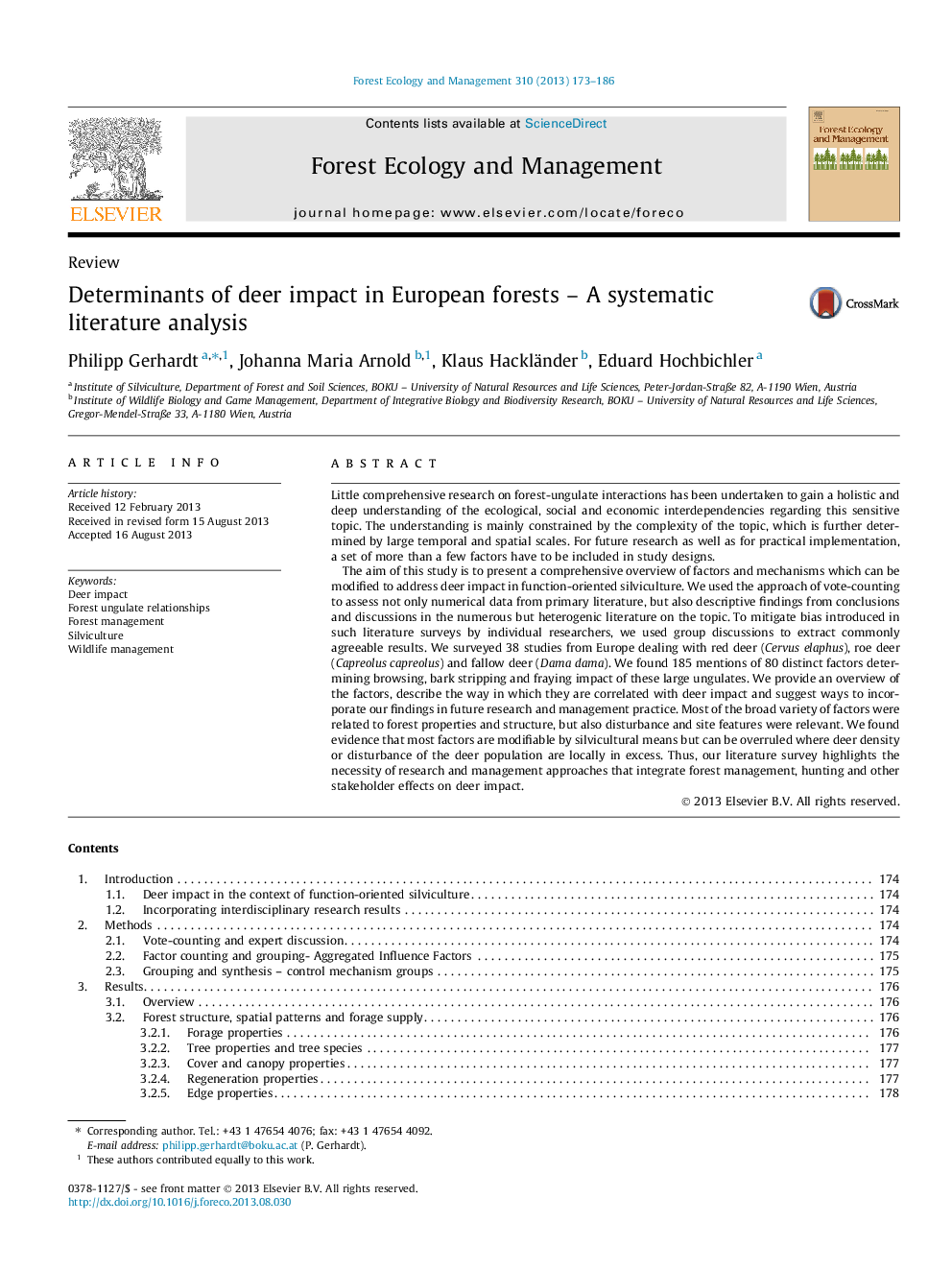| Article ID | Journal | Published Year | Pages | File Type |
|---|---|---|---|---|
| 6543661 | Forest Ecology and Management | 2013 | 14 Pages |
Abstract
The aim of this study is to present a comprehensive overview of factors and mechanisms which can be modified to address deer impact in function-oriented silviculture. We used the approach of vote-counting to assess not only numerical data from primary literature, but also descriptive findings from conclusions and discussions in the numerous but heterogenic literature on the topic. To mitigate bias introduced in such literature surveys by individual researchers, we used group discussions to extract commonly agreeable results. We surveyed 38 studies from Europe dealing with red deer (Cervus elaphus), roe deer (Capreolus capreolus) and fallow deer (Dama dama). We found 185 mentions of 80 distinct factors determining browsing, bark stripping and fraying impact of these large ungulates. We provide an overview of the factors, describe the way in which they are correlated with deer impact and suggest ways to incorporate our findings in future research and management practice. Most of the broad variety of factors were related to forest properties and structure, but also disturbance and site features were relevant. We found evidence that most factors are modifiable by silvicultural means but can be overruled where deer density or disturbance of the deer population are locally in excess. Thus, our literature survey highlights the necessity of research and management approaches that integrate forest management, hunting and other stakeholder effects on deer impact.
Related Topics
Life Sciences
Agricultural and Biological Sciences
Ecology, Evolution, Behavior and Systematics
Authors
Philipp Gerhardt, Johanna Maria Arnold, Klaus Hackländer, Eduard Hochbichler,
